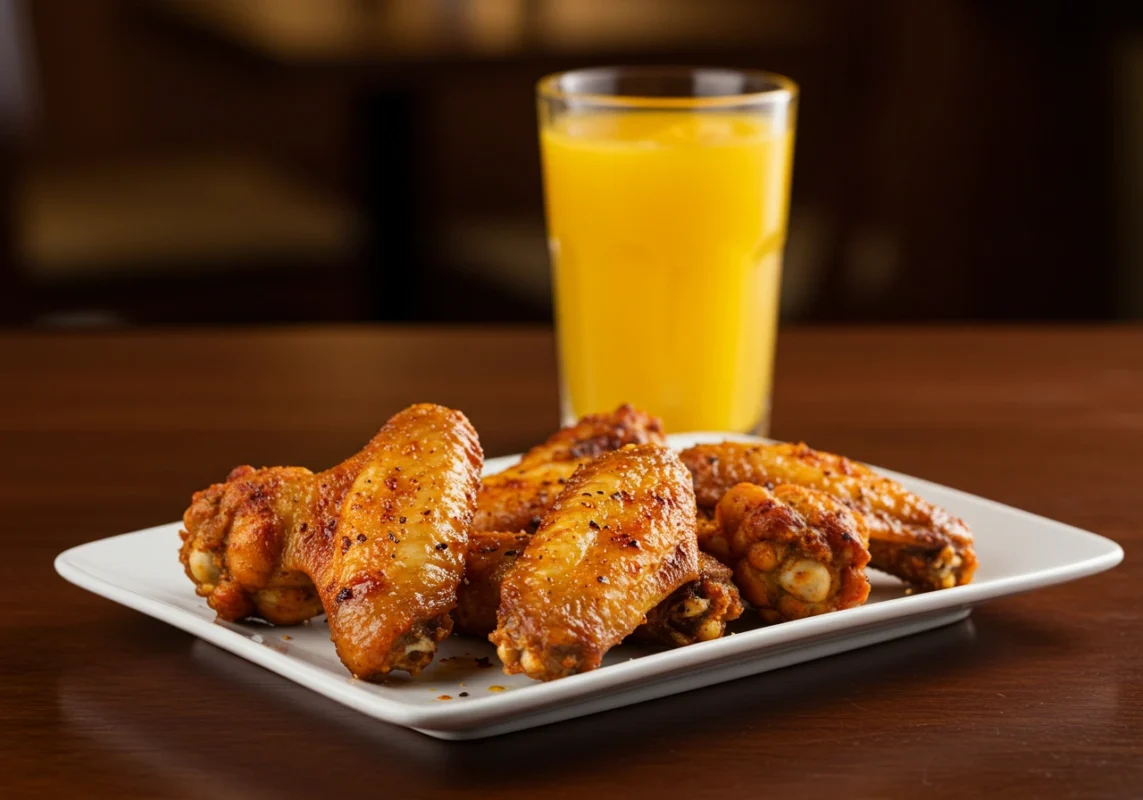Discover the ultimate answer to whether it’s better to fry or bake chicken wings. Explore the pros, cons, and techniques for perfect results.
Introduction
Is it better to fry or bake chicken wings? This question has sparked countless debates among food lovers. Both methods have their merits, and the best choice often depends on personal preferences. This guide breaks down the key differences, pros, and cons of each method. We’ll explore flavor, texture, health considerations, and the best techniques to achieve crispy, juicy wings every time.
Outline for the Article
- Introduction
- Popularity of chicken wings
- Overview of frying and baking
- What Defines the Perfect Chicken Wing?
- The balance of crispiness and juiciness
- Importance of seasoning and cooking method
- The Case for Frying Chicken Wings
- How frying works
- Advantages of frying
- Common mistakes when frying
- The Case for Baking Chicken Wings
- How baking works
- Advantages of baking
- Tips for baking crispy wings
- Flavor and Texture Comparison
- Crispiness levels: Frying vs. baking
- Flavor differences between the two methods
- Health Considerations
- Nutritional differences
- Calorie comparison
- Balancing health and taste
- Which Method Is More Convenient?
- Time and effort required
- Equipment needed for frying vs. baking
- Tips for Achieving Perfect Wings
- How to enhance crispiness for both methods
- Seasoning and marinating tips
- Using baking powder or cornstarch
- Frequently Asked Questions
- Do you have to rinse baking soda off chicken before cooking?
- How long to bake chicken wings?
- What temperature is best for frying wings?
- Can you combine frying and baking?
- Conclusion
- Recap of frying and baking benefits
- Final thoughts on choosing the best method
Is It Better to Fry or Bake Chicken Wings?
What Defines the Perfect Chicken Wing?
The perfect chicken wing should have a crispy exterior and juicy interior. Whether you bake or fry, the ultimate goal is to balance texture and flavor. Seasoning also plays a crucial role, as it enhances both methods and creates a mouthwatering experience.
The Case for Frying Chicken Wings
Frying is a traditional method that has been a favorite for decades. It’s known for delivering unparalleled crispiness and bold flavor.
How Frying Works
Frying involves submerging wings in hot oil, typically heated to 375°F. The high heat creates a crunchy exterior while sealing in the juices.
Advantages of Frying
- Unmatched Crispiness: Frying produces the crispiest wings, with a golden-brown crust.
- Quick Cooking: Wings fry in just 8–10 minutes, making this method fast.
- Rich Flavor: The oil adds a depth of flavor that’s hard to replicate with baking.
Common Mistakes When Frying
- Oil Temperature Fluctuations: Keep the oil steady at 375°F to avoid greasy or undercooked wings.
- Overcrowding the Pot: Fry in small batches to ensure even cooking.
- Skipping the Drying Step: Pat wings dry before frying to prevent oil splatter and sogginess.
For more frying tips, visit this resource.
The Case for Baking Chicken Wings
Baking has gained popularity as a healthier alternative to frying. It’s perfect for those who prioritize convenience without sacrificing flavor.
How Baking Works
Baking relies on hot air to cook the wings. Using a wire rack elevates the wings, allowing air to circulate and create crispness.
Advantages of Baking
- Healthier Option: Baking eliminates the need for excessive oil, reducing fat and calories.
- Less Mess: No hot oil splatters or cleanup required.
- Customizable Flavor: Baked wings are perfect for seasoning before and after cooking.
Tips for Baking Crispy Wings
- Preheat the oven to 425°F.
- Toss wings in baking powder or cornstarch for added crispiness.
- Flip wings halfway through cooking to ensure even browning.
For more baking techniques, check out this guide.
Flavor and Texture Comparison
Crispiness Levels: Frying vs. Baking
- Frying: Produces ultra-crispy skin with a crunchy bite.
- Baking: Creates a less intense crispiness but is still satisfying.
Flavor Differences
Fried wings have a richer, oil-infused flavor, while baked wings taste lighter and let the seasoning shine.
Health Considerations
Nutritional Differences
- Fried wings are higher in fat and calories due to the oil.
- Baked wings are leaner, making them a better option for calorie-conscious eaters.
Calorie Comparison
On average, fried wings contain 50% more calories than baked wings. For a healthier indulgence, baking is the way to go.
Balancing Health and Taste
You can make baked wings as indulgent as fried ones by tossing them in flavorful sauces or marinades after cooking.
Which Method Is More Convenient?
Time and Effort Required
- Frying is faster but involves more hands-on effort.
- Baking takes longer but requires minimal monitoring.
Equipment Needed
- Frying requires a deep fryer or large pot, along with a thermometer.
- Baking only needs an oven, a baking sheet, and a wire rack.
Tips for Achieving Perfect Wings
How to Enhance Crispiness
- For frying, use oil with a high smoke point like peanut or vegetable oil.
- For baking, coat the wings in baking powder or cornstarch.
Seasoning and Marinating Tips
- Marinate wings overnight for deeper flavor.
- Add seasoning after cooking to preserve crispiness.
Using Baking Powder or Cornstarch
These ingredients create a crispy crust for both frying and baking. Sprinkle them evenly before cooking.
Frequently Asked Questions
Do you have to rinse baking soda off chicken before cooking?
Yes, rinsing prevents a soapy taste on the wings.
How long to bake chicken wings?
Bake at 425°F for 40–45 minutes, flipping halfway through.
What temperature is best for frying wings?
Fry wings at 375°F for 8–10 minutes.
Can you combine frying and baking?
Yes, bake first to cook through, then fry briefly for extra crispiness.
Conclusion
So, is it better to fry or bake chicken wings? The answer depends on your priorities. Frying delivers unmatched crispiness and rich flavor, while baking is a healthier, easier option. Ultimately, both methods can produce delicious wings when done right. Try each technique to discover your personal favorite, and don’t be afraid to experiment with different seasonings and sauces.

